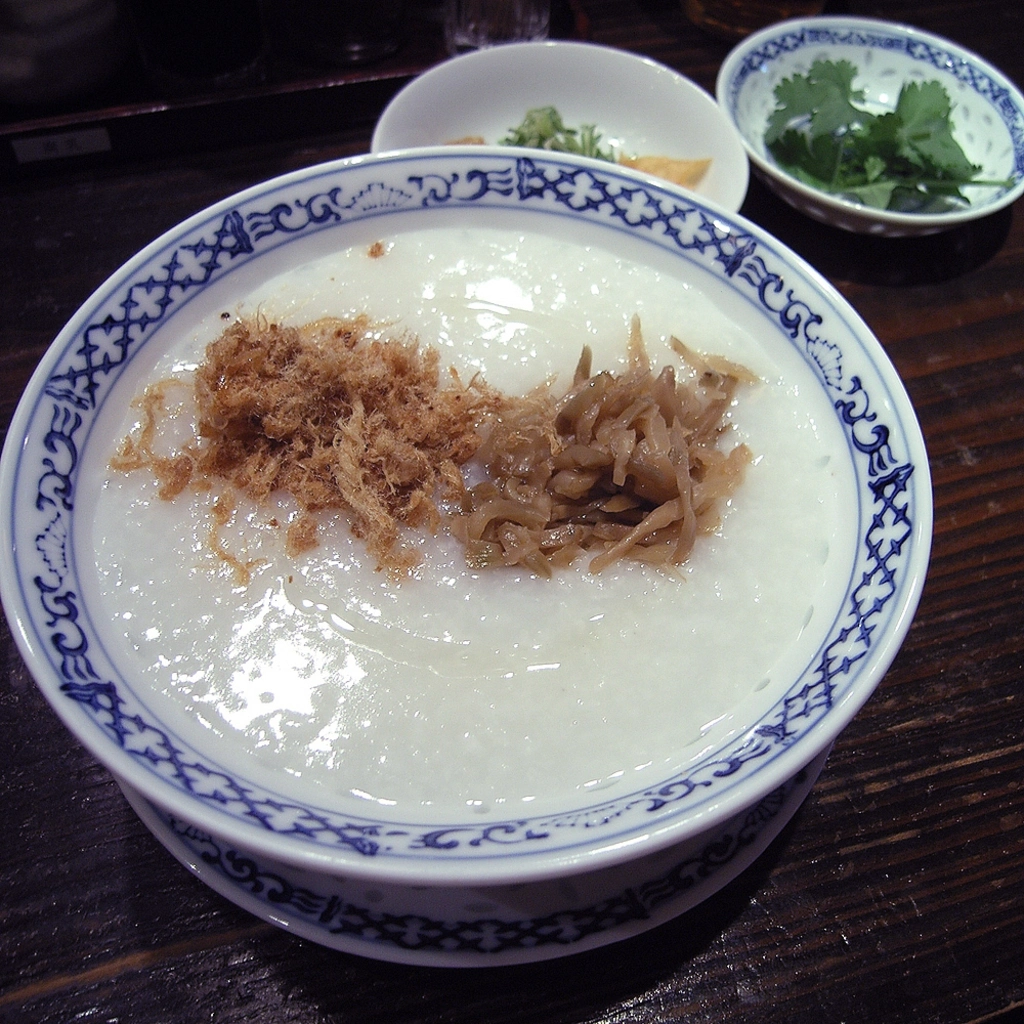Rice Soup in Buddhist Culture?

Chinese congee Photo By Daiju Azuma - Own work, CC BY-SA 2.5, https://commons.wikimedia.org/w/index.php?curid=567814
Rice soup is most popularly known as Congee (Kahn-Jee). However in the Buddhist world, it is referred to as yāgu in the Pāḷi Language. It occurs many many times in the tipiṭaka (more than 500 times) and it is still eaten today in Asia and Southeast Asia.
To make it, you simply boil and then simmer one part rice with eight parts water for one or two hours. Some rice cookers have a congee setting. You can put various items on it and salt to taste.
In Myanmar it is called ဆန်ပြုတ် hsan byok [sʰàmbjoʊʔ] literally “boiled rice.” … ( Sri Lanka, hal kenda, Thai: chok (Thai: โจ๊ก, IPA: [tɕóːk],),
This rice soup is often used for breakfast, or when a person in Asia is sick. This form of rice is also used in times of famine because you can fool yourself into thinking you are getting a bigger meal. It is probably more efficient to eat and digest as well.
Pa-Auk serves this everyday for breakfast and lunch. It is good for those who need to take more than one meal but don’t want anything very heavy. The Buddha spoke praise about this breakfast.
“Brahmin, there are these ten advantages from congee. What ten? In giving congee one gives life, one gives beauty, one gives ease, one gives strength, one gives intelligence; congee when it is drunk checks hunger, keeps off thirst, regulates wind, cleanses the bladder, digests raw remnants of food.170 These, brahmin, are the ten advantages of congee.”
Kd.6.24.6 “To the discerning whoso gives congee duly
At the right time to one who lives on others’ food,
It confers ten things on him:
Life and beauty, ease and strength;171“For him intelligence arises from it,
It dispels hunger, thirst and wind,
It cleanses the bladder, it digests food;
This medicine is praised by the well-farer.“Therefore congee should be given constantly
By a man longing for ease,
By those aspiring to deva-like joys
Or wanting human prosperity.” Vin.1.222(originally spelled as conjey in this text) Mahavagga Chapter 6, PTS
So now that you know the recipe and benefits, you can try to make it yourself at home.
Click below to search subjects